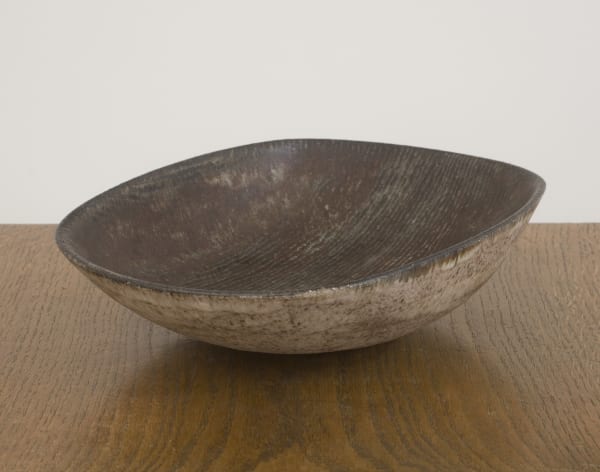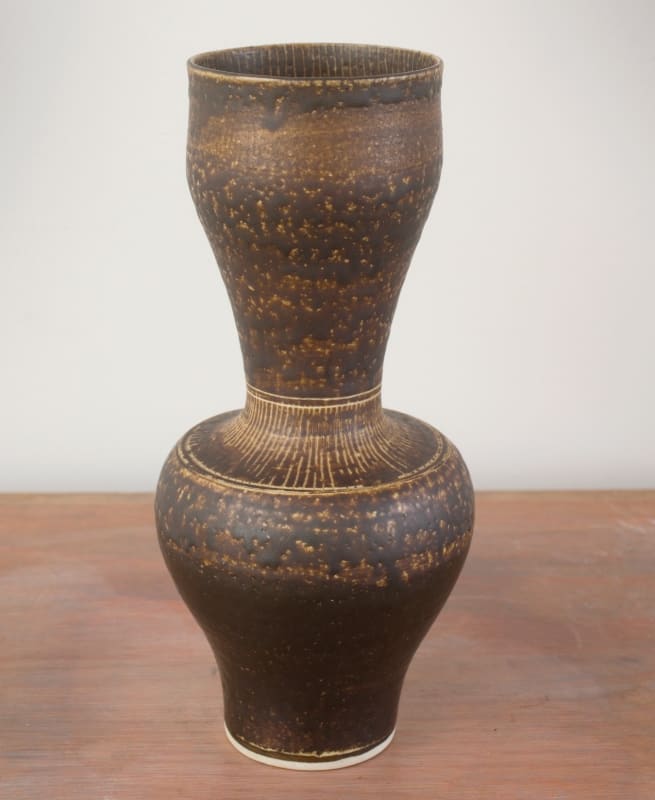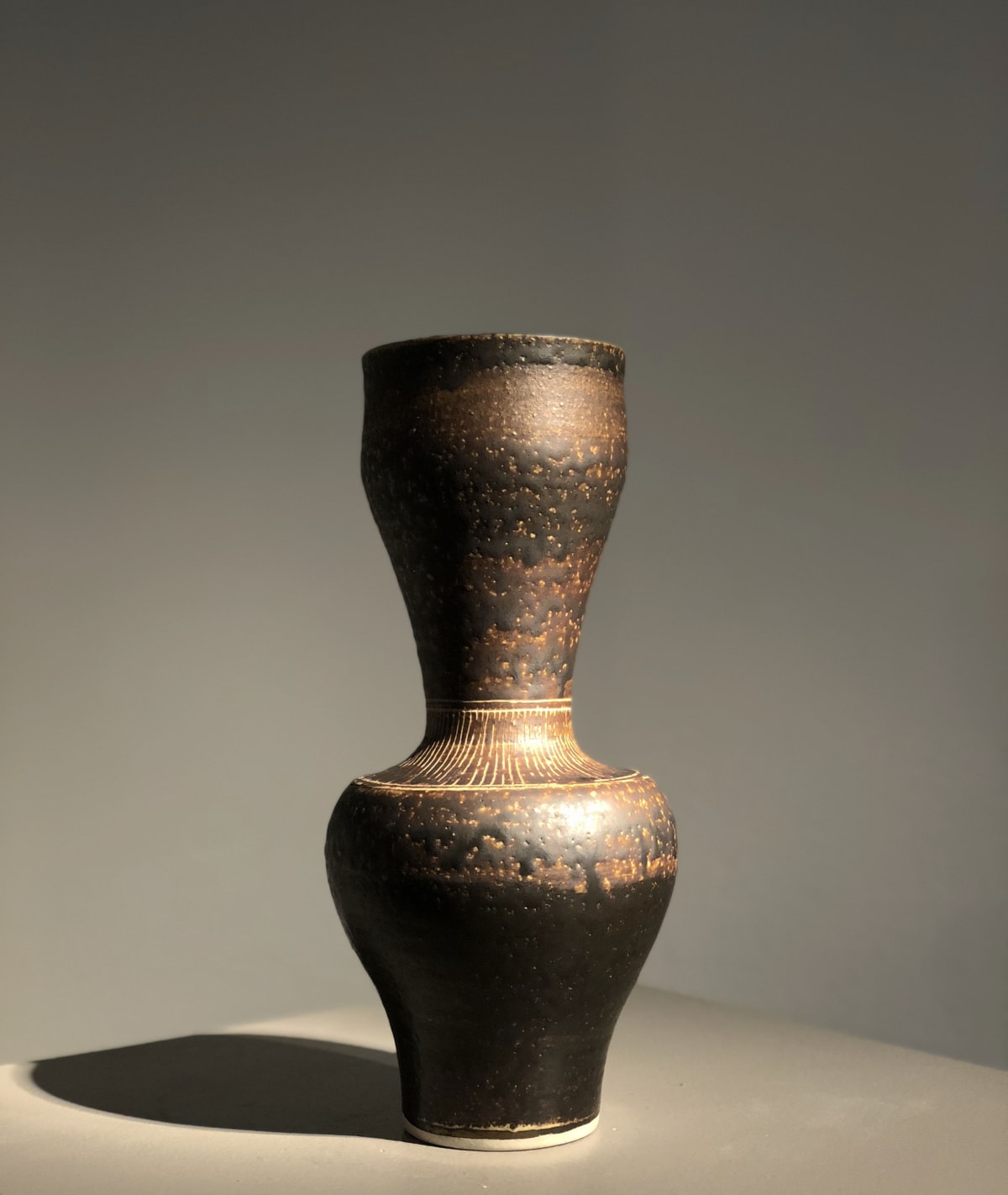Lucie Rie
Dame Lucie Rie (1902 - 1995)
Austrian potter, active in England. She studied ceramics at the Vienna Kunstgewerbeschule (1922–7) under Michael Powolny. She made earthenware tea-sets in simple shapes with finely potted rims and plain, thick handles (e.g. of c.1936; London, V&A) and began to experiment with stoneware glazes on red clay, producing the first of her ‘volcanic’ cylindrical jars in browns, ochres and greys with deeply fissured and pitted sides. She married Hans Rie in 1926 and in 1938 she moved to London where, despite her reputation on the Continent, she was little known. She set up a studio pottery in 1939 in Albion Mews, Bayswater, London, and in the same year met Bernard Leach, who was initially a powerful influence on her work. The pottery's activities were halted by World War II, but in 1945 Rie hired assistants and made quantities of hand-moulded, colourfully glazed ceramic buttons and jewellery (1945–6; London, V& A). Hans Coper joined the workshop in 1946 to train as an assistant, and together they made a range of tableware as well as individual one-off pieces. In 1950 Rie and Coper shared the first of a series of exhibitions at the Berkeley Galleries, London, and their work was shown together at the 1951 Festival of Britain.
Rie always displayed an immense understanding and control of her materials. Her work reflects an awareness of early Roman and medieval English pottery and an admiration for Chinese ceramics, particularly Song, yet it remains entirely contemporary. The glazes were brushed on layer by layer. Many of her pieces are incised with swirled fluting or a sgraffito of crosshatched lines, often highlighted with manganese oxide. Her pots may be earthenware, stoneware or porcelain; smooth, pumice-like, mottled or pock-marked; colours range from blacks, bronzes, greys to greenish-blues, yellows, beiges and off-white. Her forms range from tall, thin-necked bottles to her later flared bowls which narrow to a deep foot. Her work is often difficult to date as she often returned to favourite shapes. Although her bowls, vases and bottles encompass a wide variety of forms, textures and colours, Rie's work is admired for a characteristic discipline, serenity and finesse. She is considered one of the great master potters of the 20th century, and her work is in private and public collections worldwide.
Text Source: The Grove Encyclopedia of Decorative Arts







